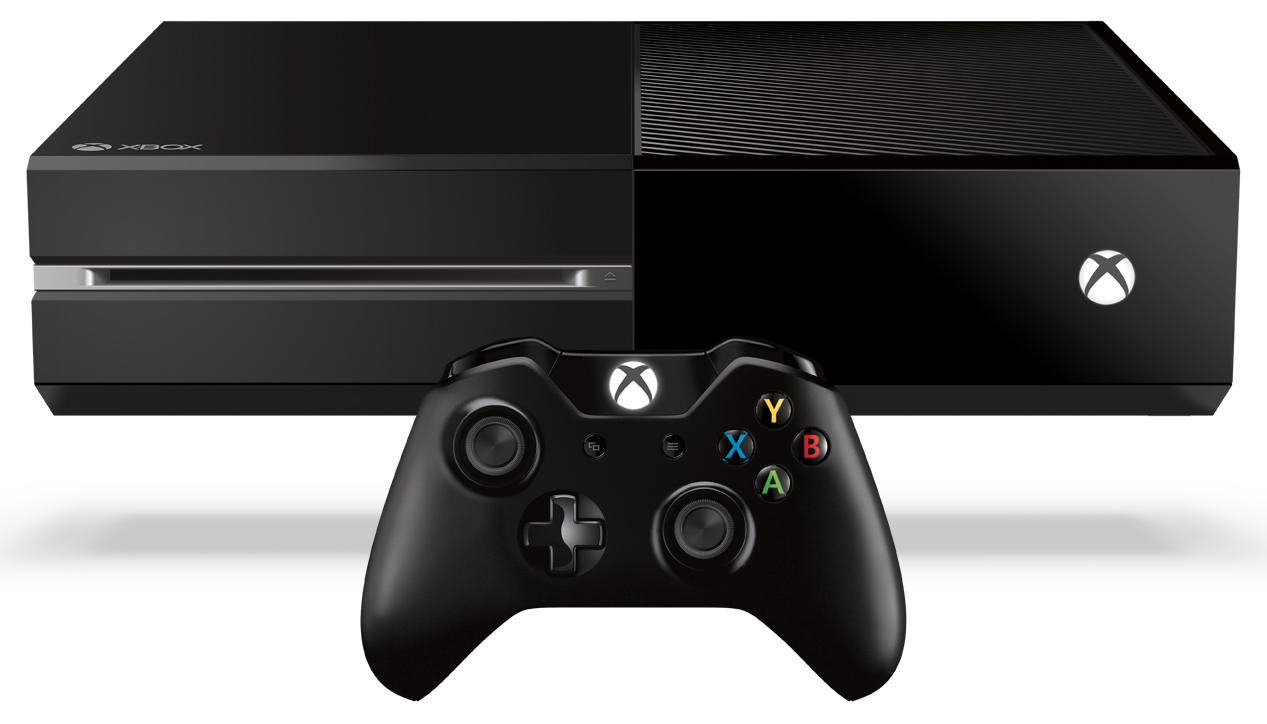 The end of the year is almost upon us, and with it comes spending bonanza of Christmas, which in the US and elsewhere starts as early as late November. In the US, the traditional Black Friday sales pave the way for the Xmas shopping sprees countrywide. Unsurprisingly, the biggest sellers every year are entertainment products; what is surprising this year, is the specific entertainment items that are flying off the shelves even before the Christmas buying frenzy has set in: videogames and videogame consoles. At a glance, however, the videogame industry might not operate in the same way the other industries do these days…
The end of the year is almost upon us, and with it comes spending bonanza of Christmas, which in the US and elsewhere starts as early as late November. In the US, the traditional Black Friday sales pave the way for the Xmas shopping sprees countrywide. Unsurprisingly, the biggest sellers every year are entertainment products; what is surprising this year, is the specific entertainment items that are flying off the shelves even before the Christmas buying frenzy has set in: videogames and videogame consoles. At a glance, however, the videogame industry might not operate in the same way the other industries do these days…

Just a few days ago, the US and Canada saw Playstation 4, the
next-gen videogame console from Sony,
release to
incredible sales stats. As much as a million units were
shifted in North America alone, 24 hours after the
initial console
launch on November 15. That’s quite a lot of
hardware designed for entertainment only, with gaming-oriented younger audiences as its main
recipient. It’s also a pretty huge investment for the Japan-based giant, who
reported heavy financial losses in September. Sony has not
turned profit with this, however — they’re operating on a
razor-thin margin at the moment.
According to an independent research carried out by IHS Inc., Sony makes a paltry USD 18 on each unit that retails at USD 399. Playstation 4 costs stem mainly from its materials, which set the company back USD 372 apiece, and manufacturing, outlays on which amount to USD 9. That doesn’t even include retailers’ percentage for sales, software licensing costs, various royalties and other costs that come with such a product. Most analysts agree that PS4 allows the company to barely break even right now and for the foreseeable future. While in any other business that would be a suicide strategy, in the gaming biz it’s a perfectly sound plan. So why exactly would Sony do this?

Apparently, it’s been the same back in
2006, when Sony’s PS3, a response to Microsoft’s Xbox 360 (a rival console), was launched. The company
struggled a lot at the beginning, making heavy losses — the same market analyst
estimated initial costs to make Playstation 3 at more than USD 800; that for a console that was retailing at USD 499 and 599,
depending on the model. Fast forward a few years ahead, and Sony’s third Playstation managed to at least
earn its keep. It eventually
caught up to Microsoft’s hugely successful Xbox 360 (which debuted in 2005), even though the industry observers kept
predicting PS3’s
failure every step of the way. More than that, Sony managed to sway a substantial number of undecided console players and build a very strong relationship with gamers worldwide. The fact that Sony is able to produce and sell that many consoles so fast
is testament to the „long, hard road” taken by the company: make initial losses,
bottom out and then start lowering the production costs,
eventually breaking even and starting turning a profit, all the while
commanding larger and larger shares of the market.

It seems that with this launch, Sony’s
set its sights on dominating the gaming market. It’s
evident in their release date strategy: their console premiered in the US first, and will show up in Europe and Asia on November 25, close to the first
outing of the Xbox One, the next big thing from the giant of Redmond. It’s Microsoft who is the „second in line”
this time around – not only does their console launch later, it costs USD 100 more and is
slightly slower
in terms of graphics and
CPU. The biggest part of the cost is additional accessories that are always sold with the console,
most notably its
motion sensor interface Kinect ™. IHS Inc., the researchers who
took PS4
apart to analyze the cost of its materials, have not, as of writing this, been able to
disassemble Xbox One (since it’s not yet available in retail) to check its costs, but at almost USD 500 for a unit it should be slightly more profitable to sell than PS4,
barring the possibly high cost to make Kinect. In short though, all experts agree: neither Sony nor MS are standing to
make a killing on the launch, only the next 2 to 3 years are going to show who’s boss. So why do it at all?

Every gamer
worth their salt will tell you that the consoles are the
mainstay of the industry. For the last eight years the so-called „next-gen”
ruled supreme; the games looked nice, played nice and were even becoming more and more
sophisticated,
despite running on the exact same hardware that has been pushed out on the market in 2005. To
compare, PC — which is still alive both as a gaming platform and as a general
computing and work
environment —
underwent many, many
iterations in its hardware, advancing by 5 or 6 „generations” of CPUs and
GPUs since that time. Games produced
solely for the PC look much better than anything put on the consoles because the console’s main
strength – the
uniformity of
tech inside each box, no matter where or when you buy it – has become its main
weakness: nothing changes hardware
-wise, and so there’s not much room to make games nicer. Sure, it’s easier to make games when you know that there’s this CPU and this GPU inside, without any
variation – you can optimize everything just to
suit the
capabilities of that particular configuration, there’s no
drivers to worry about, no
odd keyboards or strange controllers to plan for (since each console only accepts a
fixed list of accessories it can accept or use). But because of this, there’s also no room to grow games or ways to interact with them. In fact, in the
outgoing console generation it’s no longer physically possible to make them more technologically advanced or
capable of cloud computing, wireless accessibility or intuitive,
hands-free or button-free operation, all of the
buzzwords of modern-day tablets and smartphones.

Enter the actual next-gen:
PS4 and Xbox One, both of which
excel at wireless applications, cloud computing, storage and even
remote gaming, as well as a
plethora of integration with other „small” devices, like the PS Vita (Sony’s
handheld gaming console) in case of PS4 or Windows 8 tablets in case of Xbox One. Every little thing about the consoles shows that PS4
is tailored more
towards gaming, while Xbox One promises to
replace everything in your media room. And even though both consoles can play back Blu-Ray disks, Xbox One will come fully integrated as a
DVR and TV
set-top box, will operate on a
familiar-looking Windows 8-like operating system and will integrate gaming into the living room along with movies, TV, music and recreation.
Indeed, the consoles do seem like a perfect Christmas gift, and sure-fire sales for both companies. But why buy the consoles at all if you have a PC already and all the media center duties are carried out by a DVD-player or your existing set-top box?

The short and long answer is: games. The
distinguishing element is gaming, to which the new consoles are
imminently suited (unlike a more
versatile and office-oriented PC), and the last few years have been a very lucrative period in this particular industry.
Already in 2013 we’ve had two
record-breaking games, of which only one debuted on PS4 as well as on previous consoles. First of those was
Grand Theft Auto V, a fifth game in the
franchise that allows one to live the
exciting and dangerous life of a gangster in a typical modern American city. The game
features a fully open,
gorgeous landscape reminiscent of Southern California and LA in fully realized 3D graphics,
filled to the brim with exciting
action sequences,
shoot-outs and
copious amounts of drugs, alcohol and sex.
Take-Two Interactive, the
publisher of the game, reported selling 11 million copies of the game in 24 hours, becoming the first entertainment
property in history to earn USD 1 billion in less than 3 days. That’s more than Titanic or Ben Hur, it’s bigger than any book launch and more successful than any musical album ever released.

And that was before PS4 was available, back in October. But just as Take-Two celebrated the many Guinness World Records for being an
outstanding franchise, another
big-hitter came a-knocking – a futuristic
shooter Call of Duty: Ghosts, also another (tenth) iteration of a game rather than a first title. CoD:G premiered on November 4 and then on November 15, with Activision (its publisher)
reporting similar sales (GBP 621 mln) in just 24 hours. That with a slight
proviso of selling to retailers rather than to customers – but those have surely
followed suit, since GameStop, the major US videogame retailer,
claimed it has been the most preordered item in their catalogue.

So if you’re planning a Christmas
purchase,
look no further than games or consoles. With Xbox One launch just around the corner and the PS4 already on the shelves (and coming soon to Poland, too), it will be a very
appreciated gift that will surely satisfy both the
needy gamer and the entertainment-hungry
movie buff or TV
aficionado out there.
VOCABULARY
spending bonanza – tu: szał wydawania pieniędzy
Black Friday – ostatni piątek przed Świętem Dziękczynienia w Ameryce, tradycyjnie czas wielkich wyprzedaży w sklepach i moment na zakupy przed świętami Bożego Narodzenia
to pave the way for sth – utorować czemuś drogę
shopping spree – szał zakupów
the biggest seller – najlepiej sprzedający się produkt
to be flying off the shelves – rozchodzić się błyskawicznie (o produkcie)
frenzy – szał, szaleństwo
at a glance – na pierwszy rzut oka
next-gen – następna generacja konsol/sprzętu do gier
release – wypuszczenie na rynek
stats (statistics) – dane, statystyki
to shift – sprzedać masowo
initial – pierwotny
launch – wypuszczenie, wprowadzenie na rynek
hardware – sprzęt komputerowy
recipient – odbiorca
to report losses – wykazać straty
to turn (a) profit – zarobić na czymś, wygenerować dochód
razor-thin – cienki niczym brzytwa, bardzo cienki
margin – marża
research – badanie, badania
to carry out – przeprowadzić
paltry – skromny, marny
unit – jednostka, tu: sztuka (produktu)
to retail at X – kosztować X w sprzedaży detalicznej
to stem from – wywodzić się z, wynikać z
to set sb back X – kosztować kogoś X
apiece – za sztukę
manufacturing – produkcja
outlays – wydatki, nakłady
to amount to X – wynosić X
retailer – sprzedawca detaliczny
various – rozmaity
royalties – tantiemy
to break even – wyjść na zero
foreseeable – dający się przewidzieć
response – reakcja, odpowiedź
to struggle – borykać się z trudnościami
to estimate – oszacować
depending on – w zależności od
to earn one’s keep – zarobić na swoje utrzymanie
to catch up to/with sth – dogonić coś
to predict – przewidzieć
failure – porażka
to be testament to sth – być świadectwem czegoś
to bottom out – wypoziomować się, znaleźć się w najniższym punkcie
eventually – w końcu
to command – dysponować, uzyskać
to set one’s sights on sth – obrać coś za swój cel
evident – widoczny
outing – wyjście, tu: premiera
this time around – tym razem
slightly – odrobinę
in terms of – pod względem
CPU (Central Processing Unit) – tu: procesor
most notably – a mianowicie
motion sensor – czujnik ruchu
to take sth apart – rozłożyć coś na części
to disassemble – zdemontować, rozłożyć na części
barring sth – chyba że coś, o ile nie coś
to make a killing – zarobić krocie
sb worth their salt – ktoś z prawdziwego zdarzenia
mainstay – podstawa
to rule supreme – niepodzielnie rządzić
sophisticated – skomplikowany
despite – pomimo
to compare – porównać
computing – obliczenia
environment – środowisko
to undergo sth – przejść przez coś, zostać poddanym czemuś
iteration – iteracja, odmiana
GPU (Graphics Processing Unit) – tu: karta graficzna
solely – wyłącznie
strength – plus, silna strona
uniformity – jednorodność
tech – technologia, technologie
weakness – słabość, słaba strona
X-wise – odnośnie X, co się tyczy X
variation – zmiana, odmiana
to suit – pasować, odpowiadać
capabilities – zdolności, możliwości
driver – sterownik
odd – dziwny
fixed – ustalony
outgoing – odchodzący, ustępujący
capable of sth – zdolny do czegoś
cloud – technologia chmury, zdalnego dostępu i przetwarzania danych
hands-free – tu: niewymagający rąk do pracy, np. kontrolowany głosem lub gestami
buzzword – modne słówko
to excel at sth – doskonale coś umieć
remote – zdalny
plethora – multum, mnóstwo
handheld – ręczny
to be tailored to/towards sth – być zaprojektowanym w jakimś celu
to replace – zastąpić
DVR (Digital Video Recorder) – cyfrowa nagrywarka video
set-top box – dekoder sygnału TV
familiar-looking – znajomo wyglądający
sure-fire – pewny, niezawodny
duties – obowiązki
existing – istniejący
distinguishing – odróżniający, wyróżniający
imminently – tu: doskonale, całkowicie
versatile – wszechstronny
record-breaking – rekordowy
grand theft auto – kradzież auta (nazwa przestępstwa)
franchise – tu: seria produktów (np. filmów, gier itp)
exciting – ekscytujący
to feature – przedstawiać, ukazywać
gorgeous – przepiękny
landscape – krajobraz
reminiscent of sth – przypominający coś
filled to the brim with sth – wypełniony czymś po brzegi
action sequence – scena akcji
shoot-outs – strzelanina
copious amount – ogromna ilość
publisher – wydawca
property – tu: produkt, do którego ktoś ma prawa autorskie
outstanding – znakomity
big-hitter – doskonały zawodnik, wielki gracz
to come a-knocking – nadejść niespodziewanie
shooter – strzelanka (o grze)
proviso – zastrzeżenie
to follow suit – pójść (czyimś) śladem, podążyć (za czyimś) przykładem
to claim – twierdzić
purchase – nabytek, zakup
to look no further than sth – nie trzeba daleko szukać (jak się coś znalazło)
appreciated – doceniany
needy – potrzebujący, wymagający
movie buff – kinoman
aficionado – fan, wielbiciel
-by Prochor Aniszczuk
 The end of the year is almost upon us, and with it comes spending bonanza of Christmas, which in the US and elsewhere starts as early as late November. In the US, the traditional Black Friday sales pave the way for the Xmas shopping sprees countrywide. Unsurprisingly, the biggest sellers every year are entertainment products; what is surprising this year, is the specific entertainment items that are flying off the shelves even before the Christmas buying frenzy has set in: videogames and videogame consoles. At a glance, however, the videogame industry might not operate in the same way the other industries do these days…
The end of the year is almost upon us, and with it comes spending bonanza of Christmas, which in the US and elsewhere starts as early as late November. In the US, the traditional Black Friday sales pave the way for the Xmas shopping sprees countrywide. Unsurprisingly, the biggest sellers every year are entertainment products; what is surprising this year, is the specific entertainment items that are flying off the shelves even before the Christmas buying frenzy has set in: videogames and videogame consoles. At a glance, however, the videogame industry might not operate in the same way the other industries do these days…














